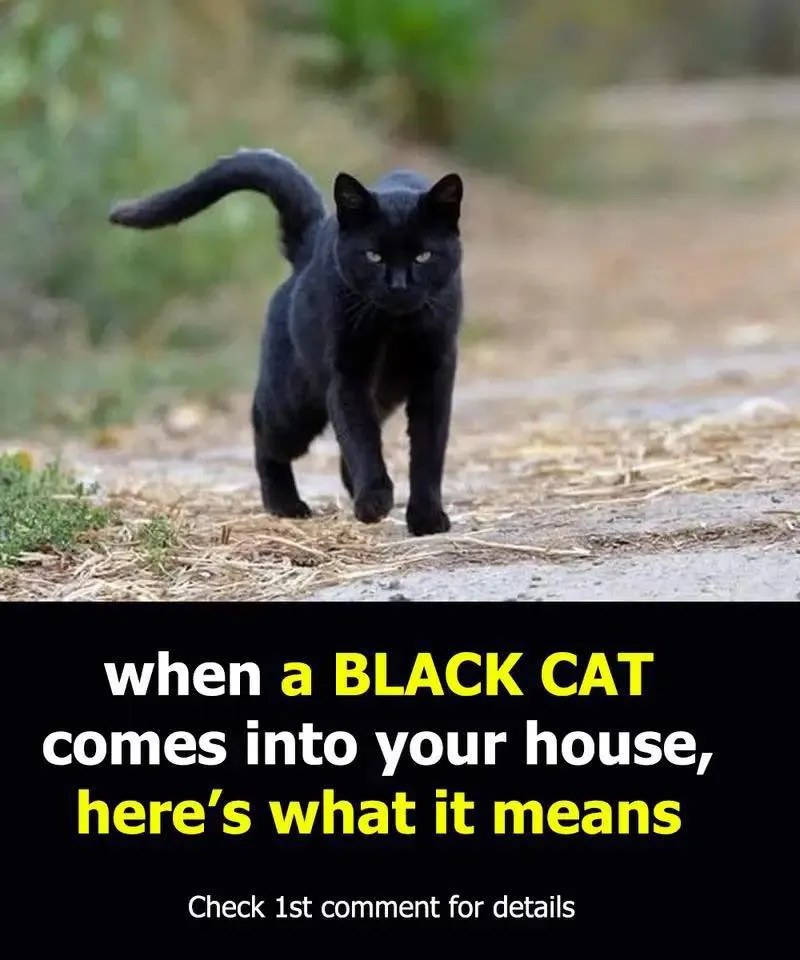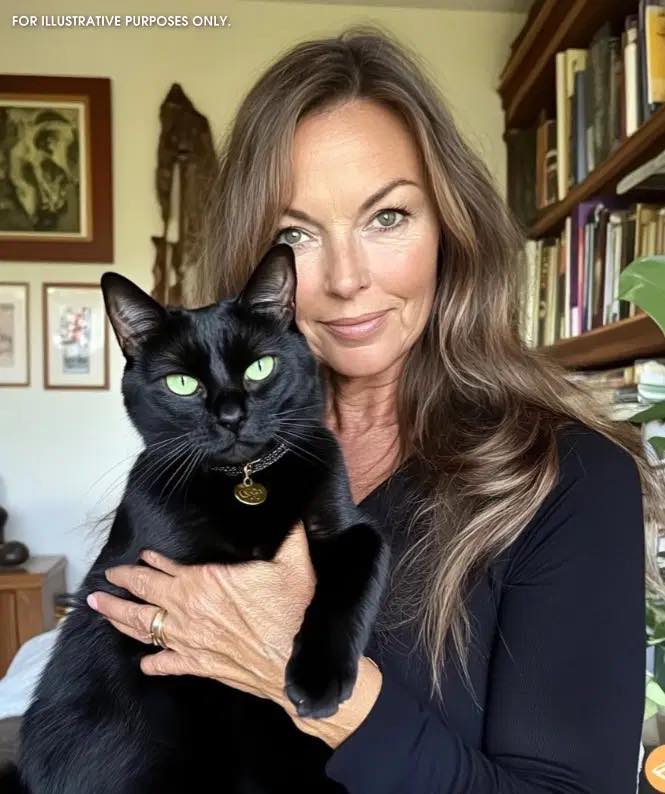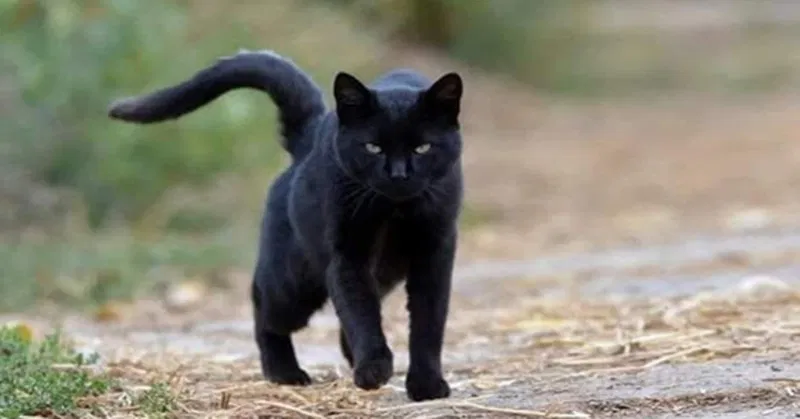The black cat – sleek, elegant, and wrapped in an air of mystery. For centuries, this enigmatic creature has been both revered and feared, symbolizing a range of meanings across cultures. While the modern-day black cat is often a beloved pet or an Instagram sensation, its history is much more complex and fascinating. And if you’ve ever had the chance to meet one, you might wonder just what kind of omen or message might be hidden behind those glowing eyes.
The mystique of black cats stretches far beyond their charming and slightly aloof nature. In many cultures, cats have always been seen as symbols of independence, grace, and mystery. They’re creatures that exist in both our world and a space just outside of it, making them the perfect subject for myth and legend. Black cats, however, took on a special significance. Their dark fur and glowing eyes gave them an almost otherworldly presence, and, over time, they became associated with the supernatural.

In medieval Europe, black cats were often linked to witchcraft. The belief was that witches could transform into black cats, allowing them to move unseen and unnoticed by the human eye. This connection to witches gave black cats a sinister reputation, and the idea that encountering one meant bad luck started to take hold. Some even thought that if a black cat crossed your path, it was a sign that the cat was a witch, and that something unpleasant was on its way.
But it wasn’t just witches that black cats were associated with. In the broader tapestry of folklore, these cats were often believed to be harbingers of doom. In fact, some cultures thought that they were creatures sent by the devil himself to deliver misfortune. In this worldview, the appearance of a black cat wasn’t just a simple coincidence; it was an omen, a signal that something bad was about to unfold.
Yet, in some cultures, black cats were seen as good luck or even protective symbols. For example, in ancient Egypt, cats were revered and even worshipped as deities, with the black cat seen as a guardian figure. Cats, regardless of their color, were considered protectors of the home, guarding against evil spirits and disease. Similarly, in Japan, the black cat has been regarded as a symbol of good fortune, particularly for women. In parts of England and Scotland, a black cat in the home was thought to bring wealth and happiness.

In other places, though, the superstition surrounding black cats became so entrenched that it had a more sinister side. During the Middle Ages, particularly in Europe, there was a widespread belief that black cats were witches’ familiars—spirits that assisted witches in their magical practices. In fact, black cats were often persecuted alongside witches during times of witch hunts, with the unfortunate cats meeting their doom alongside their supposed “owners.”
But perhaps the most enduring superstition surrounding black cats is the idea that if one crosses your path, it’s a sign of bad luck. This belief is so widespread that it persists in popular culture today, even though many people no longer believe in the supernatural powers attributed to these creatures. The solution, according to tradition? To avoid bad luck, you would need to wait for the cat to retrace its steps before you could safely cross again. But who has the patience for that in today’s fast-paced world?
In contrast, black cats have had a different role in cultures across the world, where they’re not seen as ominous at all. In the Celtic tradition, for instance, black cats were seen as guardians of the home, ensuring peace and protection. In Scotland, it was even said that the arrival of a black cat at your door would bring prosperity. In Ireland, folklore suggests that black cats were protectors of the household, keeping away evil spirits. And in other parts of Europe, sailors believed that black cats brought good fortune and safety on long voyages.
The story of black cats and their role in folklore is a fascinating one because it reveals much about the way humans have used animals, particularly cats, to explain the unknown. In ancient times, when natural phenomena couldn’t be easily understood, animals like cats became the symbols for a range of human fears, desires, and hopes. The black cat, in particular, became a blank canvas upon which people could project their deepest beliefs about the supernatural.
In the modern world, many of these superstitions have been debunked or forgotten. Most people no longer believe that encountering a black cat is a sign of impending doom. Yet, there’s still a certain magic in meeting one. Maybe it’s the sheer elegance of their movements, the way they glide silently in and out of shadows. Or maybe it’s because, like their mysterious ancestors, they still possess a little bit of that otherworldly energy that makes us pause and wonder if we’re glimpsing something beyond our understanding.
So, next time you meet a black cat, forget the superstitions. Whether you see them as a bearer of bad luck or a good omen, they remain one of the most fascinating creatures on Earth—complex, beautiful, and always full of surprises. Whether you believe in fate, luck, or destiny, a black cat will always remain a symbol of mystery, reminding us that the world is not as simple as it seems.


